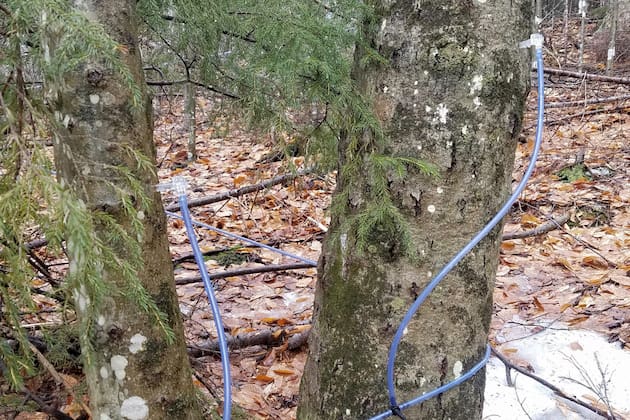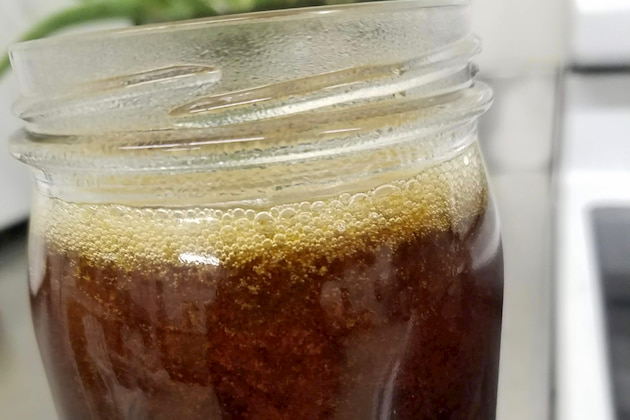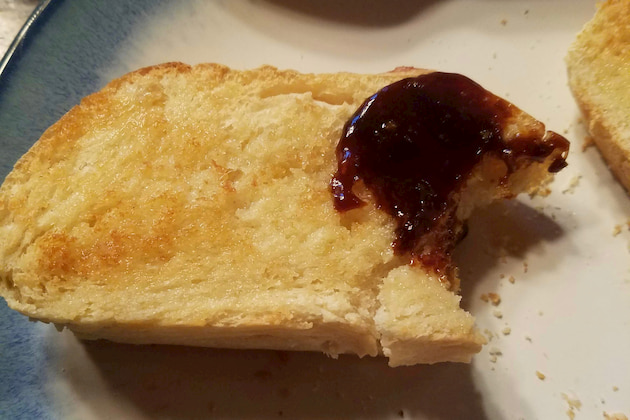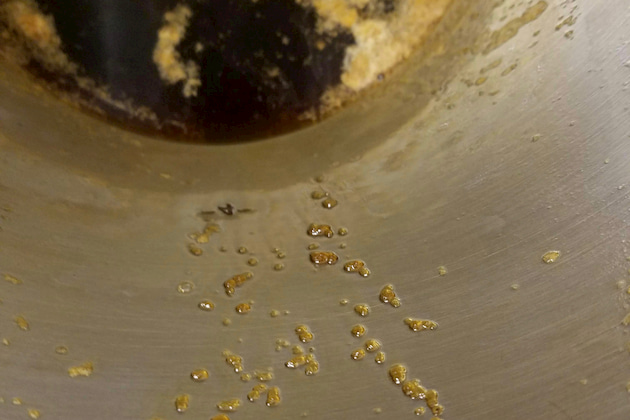Cornell Corner
Beech syrup can add value to your operation out of pesky trees
It's a thing. Beech syrup is productive and actually tastes pretty good
By ADAM DONALD WILD | SEPTEMBER 14, 2020
LAKE PLACID, N.Y.—Love ‘em don’t hate ‘em.
You know those pesky beech trees growing so thick in your sugarbush it makes it hard to walk through and when you do, they slap you in the face? Well, we are tapping those beech trees for syrup production.
Yes, you read correctly, we are tapping American beech (Fagus grandifolia) trees at Cornell University’s Uihlein Maple Research Forest in Lake Placid, NY. Since the infestation of beech bark disease throughout northern forests beech trees have been rendered to little economical value besides firewood.
By tapping the trees for sap collection, it may be possible to create value from the beech trees in your forest.
Beech bark disease is a fungal pathogen spread by tiny white scale insects where the fungus creates small dead cankers within the stem of the tree that restricts flow of water and sap.
As more and more cankers are formed across the stem, the tree slowly suffocates before reaching maturity.
However, the root and stump stay alive and send up a proliferation of root and stump sprouts that outcompete maple seedlings but being genetically identical to the parent tree, are just as susceptible to beech bark disease.
To make matters worse, deer are turned off by the taste of beech leaves and buds but instead prefer our tasty maple seedlings.
Time for sugarmakers to start drilling holes in these pesky beech trees.
There is still a lot to learn about tapping beech trees but following two seasons of data collection we can start to make conclusions.
First, the season for beech sap collection appears to start around the second half of the maple season once the snow is melted and the ground is completely thawed.
The season continues past the maple season to when the buds are opening, right around the time birch sap flow is ending.
The flow of sap does not appear to be controlled by freezing and thawing temperatures as in maple.
As long as the weather is warm and the ground has thawed you can collect sap. A key to beech sap collection is that vacuum is required to pull sap from the trees.
I tapped 10 beech trees this past spring on buckets.
No vacuum - no luck. Buckets were completely dry the whole season.
With vacuum though, we can pull sweet sap from the trees.
Speaking of sweet, don’t take that too literally.
In 2019 the average sap sweetness was 1.0% (87:1 ratio of sap to syrup) but in 2020 our average sap sweetness was only 0.6% (145:1 ration of sap to syrup).
In 2019 I tapped a combination of small 2-inch diameter saplings (plenty of those in the woods) all the way up to 14-inch diameter trees riddled with beech bark disease.
All trees produced sap.
However, the amount of sap per tap is nothing to write home about so instead, I am writing about it here in The Maple News.
With a combination of many small sapling beech trees and larger trees I was not able to get solid per tap data as theoretically, the smaller trees produce less sap. With this combination of trees, I collected 0.022 gallons of syrup per tap (2 gallons of sap per tap) across the season.
In 2020 this same combination of trees only produced 0.012 gallons of syrup per tap (1.8 gallons sap per tap).
To improve upon the production per tap data, I set up an additional beech tree trial this year with trees that were all 8-12 inches in diameter trees (our forest has a limited amount of larger beech trees).
Production per tap was certainly better in the larger trees with 0.04 gallons of syrup per tap (5.5 gallons of sap per tap) but still not nearly as great as our maple trees.
The 2020 beech sap season dropped off near the end due to colder weather and did not flow as well as it should have.
I do think the production per tap can be much greater.
Our birch season in 2020 was half our normal production and beech sap flows during similar times.
We will try again next year.
By now you probably want to know what beech syrup tastes like.
It is fantastic!
Beech syrup is somewhat close to the taste of maple syrup yet has its own unique flavor reminiscent of dried plums, pears, and raisins with a slight nutty finish.
What could be better?
Those who are turned off by the flavor of birch syrup will more than likely enjoy beech syrup.
A distinction of beech syrup is that pectin forms when the sap is boiled into syrup.
This can create difficulty filtering or if not filtered, will often turn into beech jelly.
Based on the production per tap it may not seem to be a profitable enterprise but perhaps we will find techniques to increase production.
We hope to continue experimenting with tapping beech trees and producing syrup from the trees.
But don’t worry, beech syrup is not going to replace maple syrup.
By tapping beech trees, we are bringing value to an otherwise nuisance tree and beech syrup adds another element to your product offerings.
You can stretch your beech syrup supply by combining it with your maple syrup to create beech-maple syrup and thereby increase the price point of your maple syrup.
There are plenty of beech root sprouts throughout our forest so by tapping these smaller prolific saplings we may not mind being slapped in the face by them so much…. On second thought, I think I will still mind.
If you have experience with tapping beech trees, I would love to hear about it.
Feel free to write me at adw94@cornell.edu or 157 Bear Cub Lane, Lake Placid, NY 12946


































